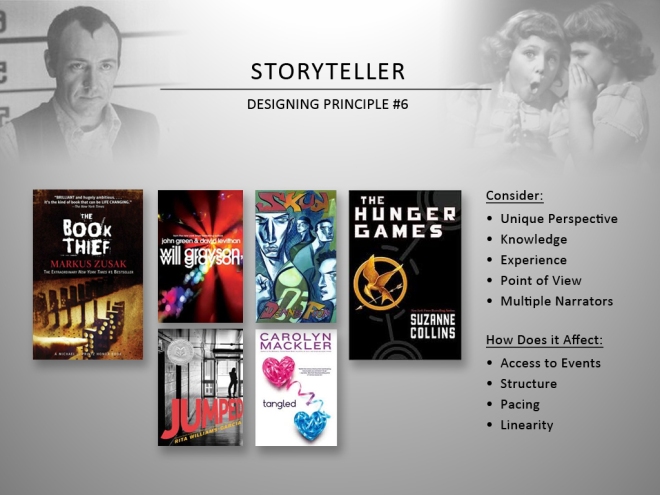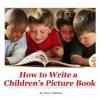The final category in my series on designing principles is the storyteller.
Who is your novel’s storyteller?
At the outset, it might not seem like the point-of-view or the narrator you chose to tell your story would have a large impact on its structure, but it does. Imagine if how differently the The Usual Suspects would be if it wasn’t told from the POV of Kevin Spacey’s character sitting in a New York City police station. Or imagine how the design of The Book Thief would be different if it wasn’t narrated by death. Or how the structure of The Hunger Games changes when you move out of the first person narration of Katniss’ mind in the book, to the omniscient eye taken in the movie? The choices of what is put where, and why, changes.
Additionally, consider the design effect of having multiple POV narrators as done in the book Will Grayson, Will Grayson which has two narrators, or Jumped which has three, or Tangled which has four, or Keesha’s House which has eight. How does one move from POV to POV? By alternating chapters? By telling the whole story of one and then the whole story of another? Or maybe weighing the POV of one over another?
The storyteller of your book is going to affects it pacing, its linearity, its patterns of repetition, and the breadth of knowledge and experience the storyteller has access to. It has ramifications in all your other design choices and shouldn’t be chosen lightly.
Hopefully, these six categories have helped you to think about how to structure and plot your own novel in a way that is organic, instead of plugging your characters in to a pre-designed template. Have fun exploring all the alternate plots and structures at your fingertips, and remember that using them should come organically from your premise and characters!
I know this has been a long series (thanks for hanging in there with me). I’ve only got a few final notes before wrapping it all up.
Up Next: Structural Layering (because yes, you probably won’t pick one structure and be done!)
Want to know more about designing principles? Try these links:
- What is a designing principle?
- Designing principle #1: A character’s mental state
- Designing principle #2: Setting and environment
- Designing principle #3: Time
- Designing Principle #4: Community
- Designing Principle #5: Parallel stories and myth






 How to Write a Picture Book
How to Write a Picture Book
Wow. I got chills just thinking about how The Book Thief would change without Death as the narrator. Death gives the story that epic weight. And Hunger Games would lose the knife edge of desperation. Great thoughts. Now I really need to think carefully as I continue my novel. I need the three voices to tell the whole story. I was just going to go with one, then changed my mind and decided to go with two. But something was missing–hence the addition of the third voice. Together they tell the story.
L. Marie, I also have three voices in my WIP. But I’m starting to wonder if it’s too many. It’s an important decision!